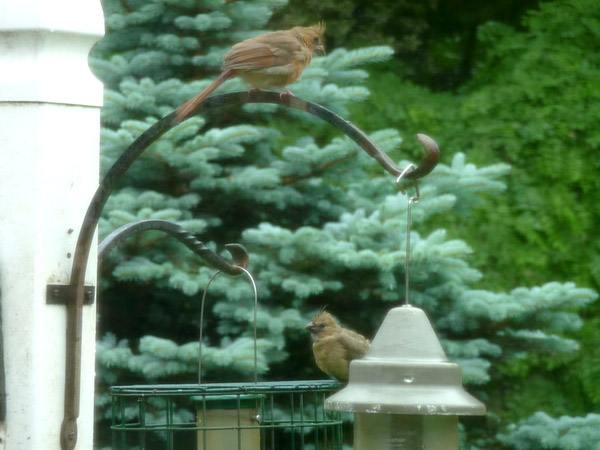Right now is the time to be looking for baby fledgling birds in your yard. Up until now mommy and daddy have been busy incubating eggs, followed by feeding nestlings. But all of this has been going on out of our sight, with nests neatly tucked away from prying eyes, and predators, in dense shrubs and trees.
But now comes the payoff, as the adults you have been watching bring their newly fledged babies to your feeders, feeding them at first, and teaching them how to find food on their own. It seems a little odd to see a baby bird sitting right on top of a feeder begging to be fed, their wings all aquiver, when the food they want is just a foot or so away. But they will learn soon, as mom or dad shows them ropes. Often time the feeding duties will be left to the male, while the female is busy sitting on a second clutch of eggs. This is true of many of our smaller back yards birds, including the Cardinal.
You might ask, “how do I tell a baby cardinal from an adult?” That one is easy. As you can see in this photo, baby Cardinals may look like an adult female, but they will have a dark bill. All adult males and females have an orange bill. The youngster’s bill will begin to turn orange in the fall.
This week alone (last week of June) I have seen cardinal, chickadee, titmouse, song sparrow, and downy woodpecker fledglings in my yard. And I expect to see baby catbirds anytime soon, since a pair of adults has adopted my feeders as their own.
The easiest way to spot a new fledgling is by sound first. If you some incessant squealing or whining, it’s probably babies begging to be fed. Then watch for them fluttering their wings close by their sides; this always accompanies the begging. So keep your ears and eyes open, and you might see one of nature’s most endearing events; Mommy or daddy feeding their new baby bird.
Dan Marquis

